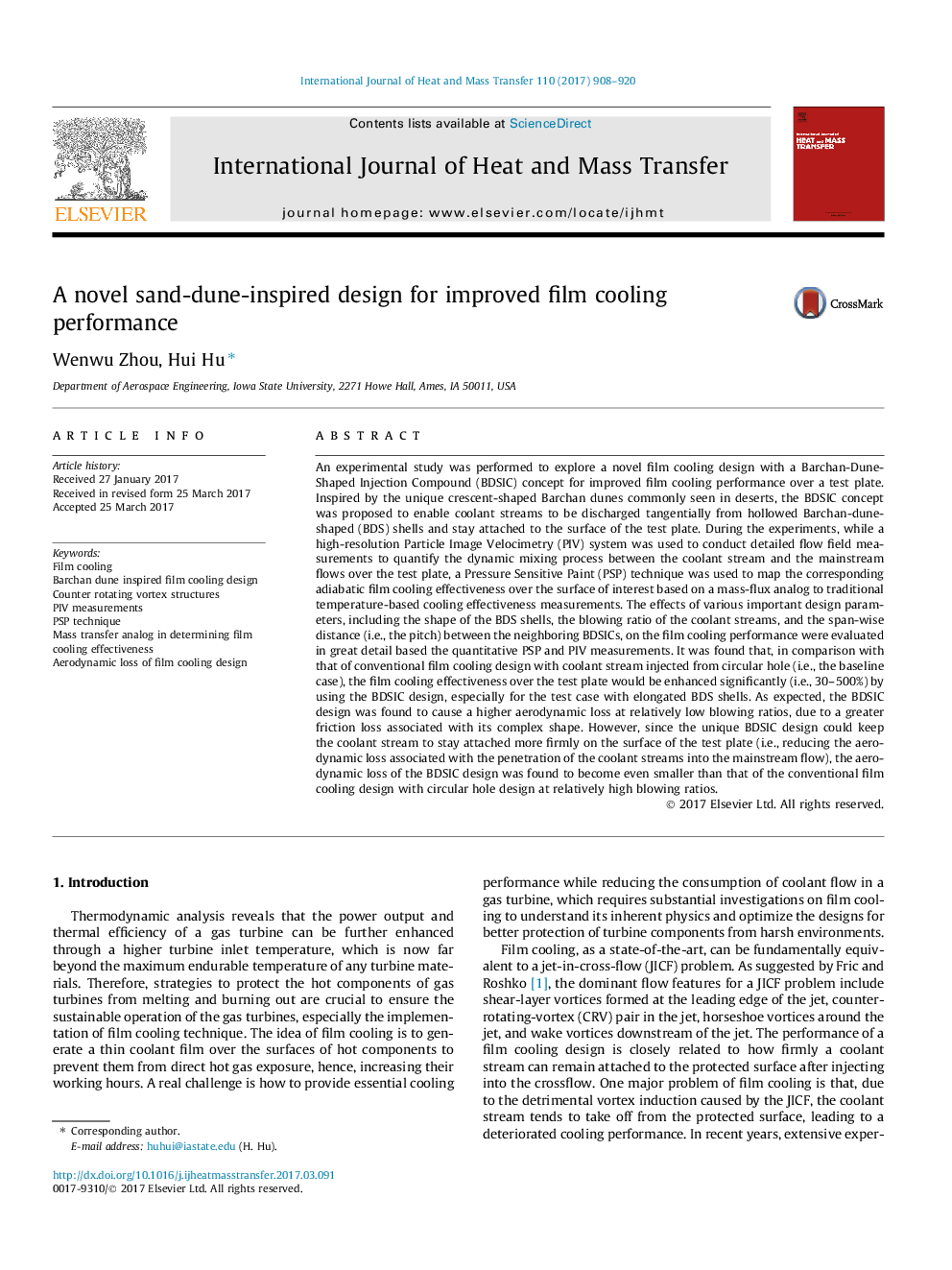| کد مقاله | کد نشریه | سال انتشار | مقاله انگلیسی | نسخه تمام متن |
|---|---|---|---|---|
| 4993619 | 1458031 | 2017 | 13 صفحه PDF | دانلود رایگان |
عنوان انگلیسی مقاله ISI
A novel sand-dune-inspired design for improved film cooling performance
ترجمه فارسی عنوان
یک طراحی جدید الهام گرفته از شن و ماسه برای بهبود عملکرد خنک کننده فیلم
دانلود مقاله + سفارش ترجمه
دانلود مقاله ISI انگلیسی
رایگان برای ایرانیان
موضوعات مرتبط
مهندسی و علوم پایه
مهندسی شیمی
جریان سیال و فرایندهای انتقال
چکیده انگلیسی
An experimental study was performed to explore a novel film cooling design with a Barchan-Dune-Shaped Injection Compound (BDSIC) concept for improved film cooling performance over a test plate. Inspired by the unique crescent-shaped Barchan dunes commonly seen in deserts, the BDSIC concept was proposed to enable coolant streams to be discharged tangentially from hollowed Barchan-dune-shaped (BDS) shells and stay attached to the surface of the test plate. During the experiments, while a high-resolution Particle Image Velocimetry (PIV) system was used to conduct detailed flow field measurements to quantify the dynamic mixing process between the coolant stream and the mainstream flows over the test plate, a Pressure Sensitive Paint (PSP) technique was used to map the corresponding adiabatic film cooling effectiveness over the surface of interest based on a mass-flux analog to traditional temperature-based cooling effectiveness measurements. The effects of various important design parameters, including the shape of the BDS shells, the blowing ratio of the coolant streams, and the span-wise distance (i.e., the pitch) between the neighboring BDSICs, on the film cooling performance were evaluated in great detail based the quantitative PSP and PIV measurements. It was found that, in comparison with that of conventional film cooling design with coolant stream injected from circular hole (i.e., the baseline case), the film cooling effectiveness over the test plate would be enhanced significantly (i.e., 30-500%) by using the BDSIC design, especially for the test case with elongated BDS shells. As expected, the BDSIC design was found to cause a higher aerodynamic loss at relatively low blowing ratios, due to a greater friction loss associated with its complex shape. However, since the unique BDSIC design could keep the coolant stream to stay attached more firmly on the surface of the test plate (i.e., reducing the aerodynamic loss associated with the penetration of the coolant streams into the mainstream flow), the aerodynamic loss of the BDSIC design was found to become even smaller than that of the conventional film cooling design with circular hole design at relatively high blowing ratios.
ناشر
Database: Elsevier - ScienceDirect (ساینس دایرکت)
Journal: International Journal of Heat and Mass Transfer - Volume 110, July 2017, Pages 908-920
Journal: International Journal of Heat and Mass Transfer - Volume 110, July 2017, Pages 908-920
نویسندگان
Wenwu Zhou, Hui Hu,
